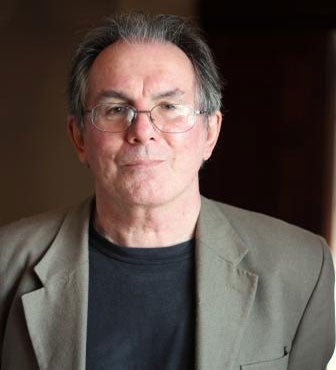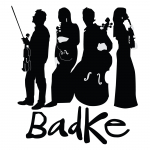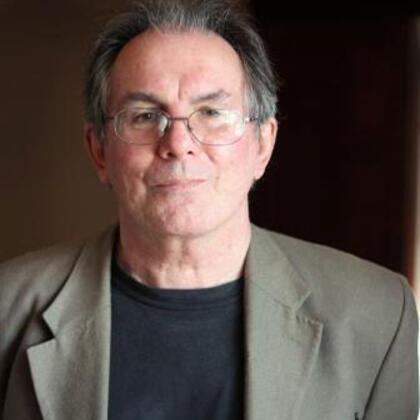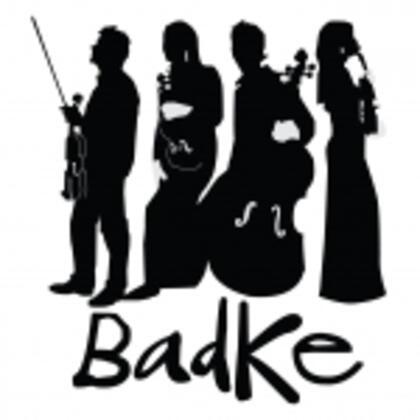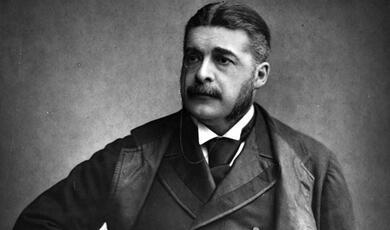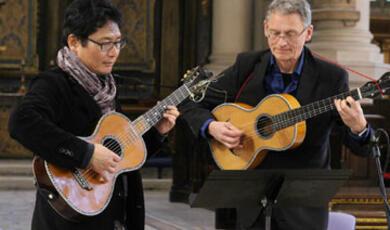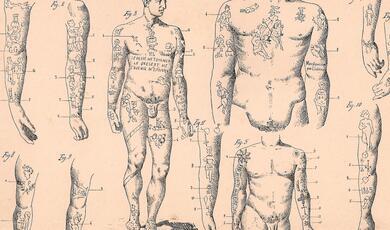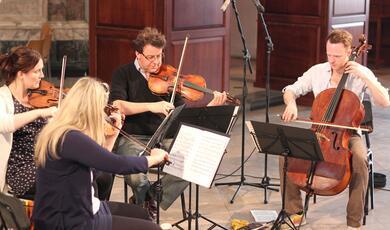Wolfgang Amadé Mozart, K 499 in D major
Share
- Details
- Transcript
- Audio
- Downloads
- Extra Reading
Franz Anton Hoffmeister was in Vienna during Mozart's time in the city, and was a personal friend of the composer; hence the attachment of his name to this quartet, which comes directly after the six "Haydn" quartets and was composed in 1786. Mozart's quartet vision was ever-expanding, in particular into further explorations of counterpoint (in the second, minuet movement) and into the detailed filigree of the Haydn-influenced slow movement.
Download Transcript
Professor Roger Parker
20/5/2010
Just a few days ago, the Badke Quartet, who in half an hour's time you'll hear perform Mozart's 'Hoffmeister' quartet, K. 499, gave a concert at one of London's newest venues, Kings Place. The programme was made up entirely of string quartets: by Haydn, Mendelssohn and the contemporary composer James Francis Brown. It may seem that their concert was doing little more than replicate, indeed celebrate, a tradition that is now centuries old: the tradition of concert audiences gathering together to listen in attentive silence to a series of works, some new but mostly very old, by this most hallowed of chamber music ensembles. Indeed, it's part of the pleasure of such occasions that they seem to restore something of a now distant world and, connected to this, that they offer an intensive indulgence in the most elevated of musical experiences. Attending the opera may be more expensive and offer more elite company, but-in part because of this-opera-going also has the tinge of being as much a social event as a musical one. Attending an orchestral concert may expose one to an equally venerated repertoire, but traditionally the symphonic fare on offer will be interrupted by a concerto, and thus by exposure to showy instrumental virtuosity and its surface charms. With the string quartet concert you get none of this, no distractions either on or off the stage. The lights dim to aid concentration; mobile phones and other paraphernalia of today's frantic, manically communicative world are dutifully silenced; listeners' fingers are carefully arranged in tented concentration; a frown and pursed lips will not go amiss; some may even close their eyes, not to be distracted by the all too human gestures of the performers; the string quartet concert is about to begin.
As I said, part of the pleasure of this experience is that it might seem to recreate a lost world, one in which the core repertory of the string quartet-those compositions by Haydn, Mozart and Beethoven that we celebrate in this series of lectures-came into being. But as many of you will know, this sense of historical continuity is, when looked at with any scrutiny, more about wishful thinking than anything that stands up to historical scrutiny. All the features I mentioned earlier-the dimmed lights; the silent, uninterrupted listening; the very fact of attending a concert at all, let alone one entirely made up of string quartets-all these have a history, a gradual emergence that can be charted. What's more, such behaviour does not stretch back to the days when most of the repertory thus celebrated was brought into being. It does not, in other words, have to do primarily with what these string quartets were: it has to do with what they have become: the aura that has collected around them over the centuries, and that has sustained them to the present day.
In one sense, Mozart's 'Hoffmeister' quartet, which we're going to hear today in concert, is an obvious example of these changed circumstances. Like his six quartets dedicated to Haydn, which came just before it, this work was not written for the concert hall (public performances of string quartets were extremely rare in late eighteenth-century Vienna), but for a publisher, and thus primarily for performance in private spaces. The work is named after its publisher, Franz Anton Hoffmeister, who first made a name for himself as a composer, but in 1784 founded one of the earliest publishing houses in Vienna, taking advantage of rapidly expanding European trade routes to broaden the dissemination his own and other composers' works. Among his first acquisitions in this endeavour were some pieces by Mozart, then at somewhere near the height of his ten-year career in Vienna. According to later-admittedly somewhat unreliable-testimony, their collaboration was initially rather rocky. Mozart's supplied Hoffmeister with a pair of piano quartets, but they sold less well than expected, causing the publisher to cancel plans for further works for this ensemble, and to ask Mozart to write in a more popular vein (something of a litany where Mozart's critics were concerned). At around the same time, we have this letter from composer to publisher:
I turn to you in my distress and beg you to help me out with some money, which I need urgently at the moment. - Forgive me for continuing to trouble you; but since you know me and know how anxious I am that your business should succeed, I am convinced that you will not take my importunity amiss and will help me as readily as I shall help you.
Someone (possibly Hoffmeister) annotated this letter with the brief note: '20 November 1785 with 2 ducats'.
Given that the usual fee for an opera was 100 ducats, this was hardly beyond the dreams of avarice; perhaps it was sufficient unto the day, and Mozart's career was anyway buoyant at that time: later in the decade the begging letters to friends and acquaintances would assume a much more desperate tone. Whatever the case, the next year Mozart gave this new quartet to the publisher, a gesture which assured Hoffmeister a place in posterity that his own mass of compositions, string quartets included, would never achieve.
So when, one might ask, did the string quartet as a genre become a concert entertainment? As it happens, the city that seems first to have had an active tradition of 'public' quartet playing was the one in which we're sitting today: although it continued to fare badly in producing composers of international fame, London, as in so many others ways, often the most progressive centre so far as musical practice was concerned. As early as 1769 there are records of string quartets being played publicly in the city: never on their own, but as one musical entertainment among the usual 'mixed' concert that was the fashion at the time, where anything striking of uniformity was instantly pronounced dull. So during this period string quartets would vie with operatic and instrumental soloists, and with various orchestral groups, often part of immensely long concert programmes in which audiences and their attention spans must have wandered alarmingly. Not surprisingly in the circumstances, the quartets that emerged from this tradition veered towards the orchestral and virtuosic. Haydn, for example, contributed some suitably extrovert pieces during his London visits, in particular his Op. 71 and Op. 74 quartets, which have difficult, showy first violin parts; but he was easily exceeded in popularity by Ignaz Pleyel, whose many quartets extended the virtuoso style to all four instruments.
Much more important in the development of our concert culture were the series of specifically chamber music concerts that emerged in the early years of the nineteenth century, first in Vienna in 1804 with Ignaz Schuppanzigh, a violinist who was long associated with Beethoven; then a decade later by Pierre Baillot in Paris. The remarkable innovation of these concerts was partly that they restricted themselves to a particular type of music: chamber music generally, with string quartets at their centre. But they also, and contrary to the prevailing fashion, concentrated on a narrow range of composers, those increasingly associated with what was becoming known then as 'classical music', and held up Haydn, Mozart and Beethoven as the models against which all others were to be measured. While in the very earliest days of these new types of concert, Beethoven at least was still living and productive, by the 1830s the same repertoire continued to be played, despite the fact that all its central composers were no longer living. Robert Schumann, who was in many ways a prime mover in 'modern music' of the so-called New German School, summed up the situation so far as chamber music was concerned in 1842:
The quartets of Haydn, Mozart, Beethoven: who does not know them and who dares cast a stone at them? It is abundantly clear that these creations have an undying vitality, so much so that after the lapse of half a century they still delight all hearts, posing a challenge to the succeeding generation that in so long a period of time nothing comparable has been created.
Prophetic words indeed, in that the cultural pessimism they betray (the spectre of that ever-greater -challenge to the succeeding generation-) has been echoed down the years from that moment to this.
It will be interesting to pause for a few moments over the inauguration of these specialised chamber music concerts in London. Because such music had, as we saw a minute ago, been a regular part of London concert life in the late eighteenth century, the trend towards specialisation was much slower to catch on, but in 1835 the violinist Henry Blagrove began a series of so-called 'Concerti da Camera', self-consciously modelled on those in Vienna and Paris. The very first concert featured Mozart's E-flat quartet at the close the first half, and the first of Beethoven's Op. 59 set at the close of the second, interspersing these 'classical' numbers with larger chamber ensembles by Hummel and the more recent Anglo-French composer George Onslow, and also with songs by Arne and Schubert (remnants, these last, of the 'mixed' concert that was still the norm in other venues). A long review in a contemporary journal, The Musical Library, makes clear the novelty of a programme 'in which quartets, quintets, and music of this class, form the principal part', and goes into some fascinating detail about the new layout of the concert room this inspired:
The Hanover Square Room - was divided on the present occasion by a screen, which cut off about a third. Immediately in front of this partition a platform, raised two or three feet from the floor, was placed for the performers, which arrangement answered exceedingly well, in every way. Among the company. amounting in number between two and three hundred, we observed all the amateurs of quartet music now in town; and but one opinion prevailed as to the desirableness of such a concert, and the manner in which this first attempt was executed.
The account of the concert itself soon underlines the difficulties that modern offerings could encounter in the face of august, increasingly worshipped 'classical' opposition. Poor Onslow, for example, was damned with the faintest of faint praise. After clarifying in a footnote that national protection should not be extended to him ('he was born abroad, and resides on the continent'), the anonymous critic dealt with Onslow's Twelfth Quintet in A minor as follows:
Onslow, a dilettante, is of the Beethoven school in style; he is learned and laborious, often rises above mediocrity, though not to any vast height?. He is highly finished, but cold, and trusts more to artistic combinations than to melody.
This encomium was unlikely, you might think, to feature on the future Onslow CV; but it was better than the treatment his Eleventh Quintet received in the next concert of the series. Here the critic reported as follows:
We were, unluckily, too late to hear more than a part of - Onslow's Quintet, but a very able-judging friend gave us a good account of it.
The most revealing passage in the review of the first concert concerns Beethoven's Op. 59 No. 1. The quartet was plainly found 'difficult', but such problems were placed at the door of the listener rather than the composer, and used in order to construct or bolster a sense of superiority amongst those elite listeners who professed understanding.
The quartets [Op. 59] are not written in a style likely to be understood by the many, and, for a time, even the cognoscenti were far from entering into it. These most elaborate compositions have at length won the good opinion of all the best judges, though it is more than probable that they will long continue 'caviare to the general'. The last movement - is remarkable for its artist-like ingenuity, though, to enjoy it, the hearer should either know it almost by heart, or have the score in his hand while he is listening. Hence it must be obvious that it can never become popular.
That reference to 's core in hand- is significant, and was an important badge of office in these quartet concerts, demonstrating as it did that the listener was above all concerned with the work rather than itsperformance.
An extreme point is this concert-going trend was reached in London a few years later with the Beethoven Quartet Society, which staged a series of overtly didactic programmes in the home of its organizer, Thomas Alsager, at 76 Harley Street. These concerts were exclusively of string quartets, with Beethoven at their core, and they strove to educate the already highly-selective audience (no more than fifty or so) by choosing particular paths through the 'classical' repertory, perhaps with a quartet from each of Beethoven's three periods, or perhaps with works designed to illustrate the history of the quartet from early Haydn to late Beethoven. Again, score-reading was encouraged among the audience, and the self-improvement attached to the whole event was emphasised by the inclusion (very new at this time) of detailed programme notes explaining the salient features and historical importance of the repertoire. The sense of a new religion, above all of a new solemnity, is striking. When Berlioz visited London and attended one of these concerts he evidently approved of the seriousness (Beethoven worshipper that he was); he did, though, entertain some doubts about the integrity of some of the score-readers:
You see these English people following on little miniature scores, printed in London for the purpose, the unpredictable flight of the master's thought-which would suggest that quite a few of them can manage to read the score. But I have had my suspicions of these score-mongers- ability ever since the time when, looking over the shoulder of one of them, I discovered that his eyes were glued to page four although the players were already at page six.
Gallic teasing aside, the remarkable aspect of these frankly elitist experiments in 'quartet concerts' during the mid-nineteenth century is that, as we can all testify, the model they offered to an at first mostly bewildered public gradually became the dominant one, the one that has survived to this day. What is more, it spread to almost every kind of 'classical' concert: events now mostly characterised by an extreme uniformity of genre, by a concentration on the works of composers long dead and by the most 'disciplined' listening imaginable, usually aided by didactic programme notes and even-you're witnessing one today-by preparatory lectures. To put this another way, the elite 'quartet concert' celebrating the 'classics' eventually became the norm, as all concert music became overwhelmingly 'classical'. The creative chaos of eighteenth-century musical life, in which most musical works were written yesterday, were eminently dispensable because more would arrive tomorrow, and were listened to at best sporadically, taking their place among other social diversions, gradually transformed into our own, ultra-disciplined, ultra-conservative present.
With that homily, and after that long digression, we can finally return to Mozart and his 'Hoffmeister' quartet. As will be clear, to hear this work in a large gathering such as we are today, with well over a hundred people listening silently to a group of performers isolated from them on a stage, is not a context for which the work was imagined. Mozart's quartet was above all written for players, and amateur ones at that (although the distinction between amateur and professional was by no means as rigid as it is today). What's more, the quartet shows, at least in comparison with the more complex works that Mozart dedicated to Haydn, that the composer was making efforts to curb his propensity for complexity, something perhaps urged by Hoffmeister as likely to enhance its sale to less accomplished players. That having been said, Mozart's K. 499 is very far from a 'dumbed down' quartet, indeed, a good part of its enduring fascination is that it manages to alternate so skilfully between what we might call the 'popular' style and its most complicated, demanding, 'learned' antithesis. This much is evident from the opening (what we call in the trade the 'exposition') of the first movement: the simple arpeggio figure, bouncy dotted rhythms, unison texture and cello pedal point that launch the movement do indeed suggest a 'popular' idiom, but what follows immediately delves into more complex territory. First comes a 'play of couples': the two violins and then the viola and cello indulge in little echoing duets, playful pairings that will become a marked feature of the quartet as a whole. Then there is a dive (again, the first of many) into mysterious harmonic territory; then an exploration of counterpoint (a gathering obsession of Mozart's later music) with a canon between the first violin and the cello; then a further dive into distant keys; then a return to the 'popular' style with chugging inner parts and a further duet for the first violin and -cello. Throughout, in other words, there's the sense of continual textural alteration, of moving from one manner to another, of never allowing the mood to settle for too long, of constantly challenging the players by fresh combinations.
The remaining three movements play out this alternation of moods on a larger canvas. The popular vein is at its most extrovert in the second-movement minuet and in the final Allegro, but is likely to emerge at any moment (I was reminded of this by the Badke Quartet's second violinist, who's omewhat ruefully-pointed out the extent to which her part in the quartet is taken up with generous doses of very simple, arpeggiated accompaniment). Indeed, I hope it's not merely because I've spent so much of my life immersed in Italian opera that I even hear pre-echoes of Rossini at his most exuberant in the quartet's last moment. Such similarities shouldn't, after all, come as a surprise: Mozart was always a key figure for Rossini. As the older composer charmingly put it, Mozart was the delight of his youth, the despair of his maturity and the consolation of his old age. K 499's central point of lyrical repose, or seriousness if you will, is the slow movement, a beautiful adagio which is, as one might expect from Mozart, in part a kind of decorated operatic aria for the first violin, but which also, and movingly, explores yet again that 'game of couples', with the decorated melody exchanged from the very start between the two violins and the two lower instruments in parallel thirds, for all the world like a trial run for the ravishing pairs of voices that, a few years later, will dominate Mozart's last opera buffa, Così fan tutte.
So: the quartet awaits us, and perhaps that reference to Mozart's great comic opera suggests the best possible mood in which to anticipate its vitality and variety of effect. Here to play it for us is the Badke Quartet. Please join me in welcoming them: Heather Badke, first violin; Emma Parker, second violin; Jon Thorne, viola; and Jonathan Byers, cello.
Badke Quartet plays
©Professor Roger Parker, Gresham College 2010
Part of:
This event was on Thu, 20 May 2010
Support Gresham
Gresham College has offered an outstanding education to the public free of charge for over 400 years. Today, Gresham plays an important role in fostering a love of learning and a greater understanding of ourselves and the world around us. Your donation will help to widen our reach and to broaden our audience, allowing more people to benefit from a high-quality education from some of the brightest minds.


 Login
Login
